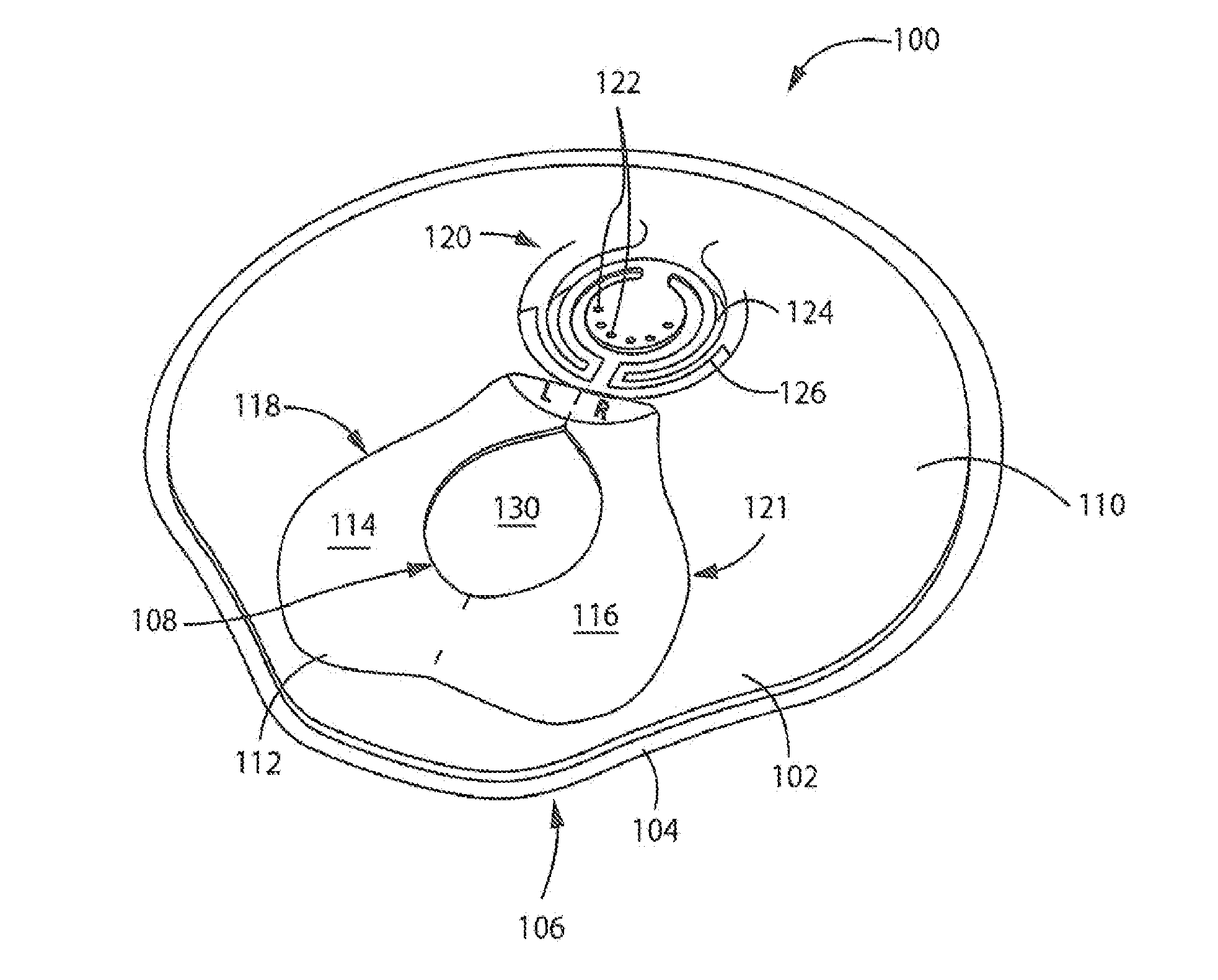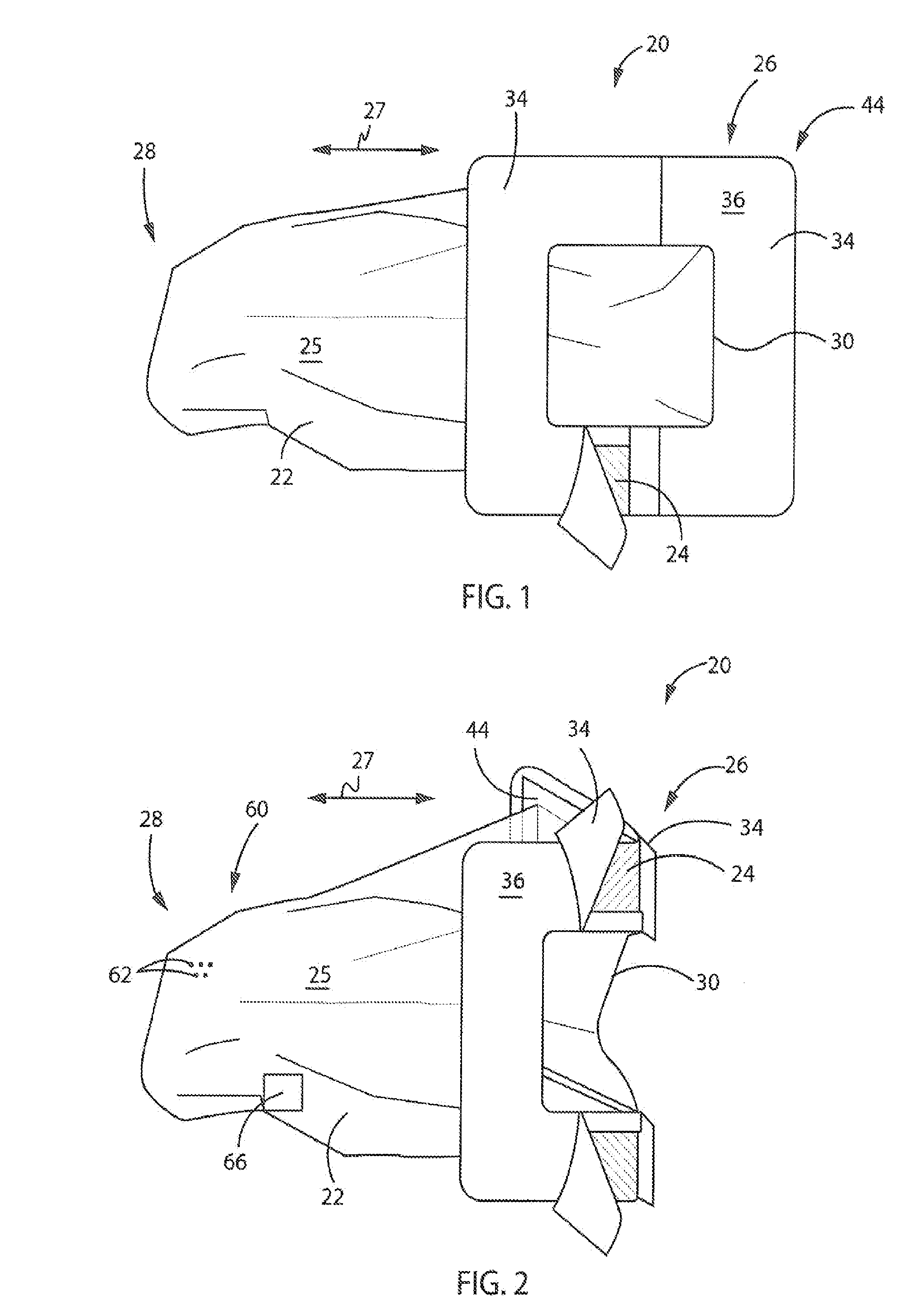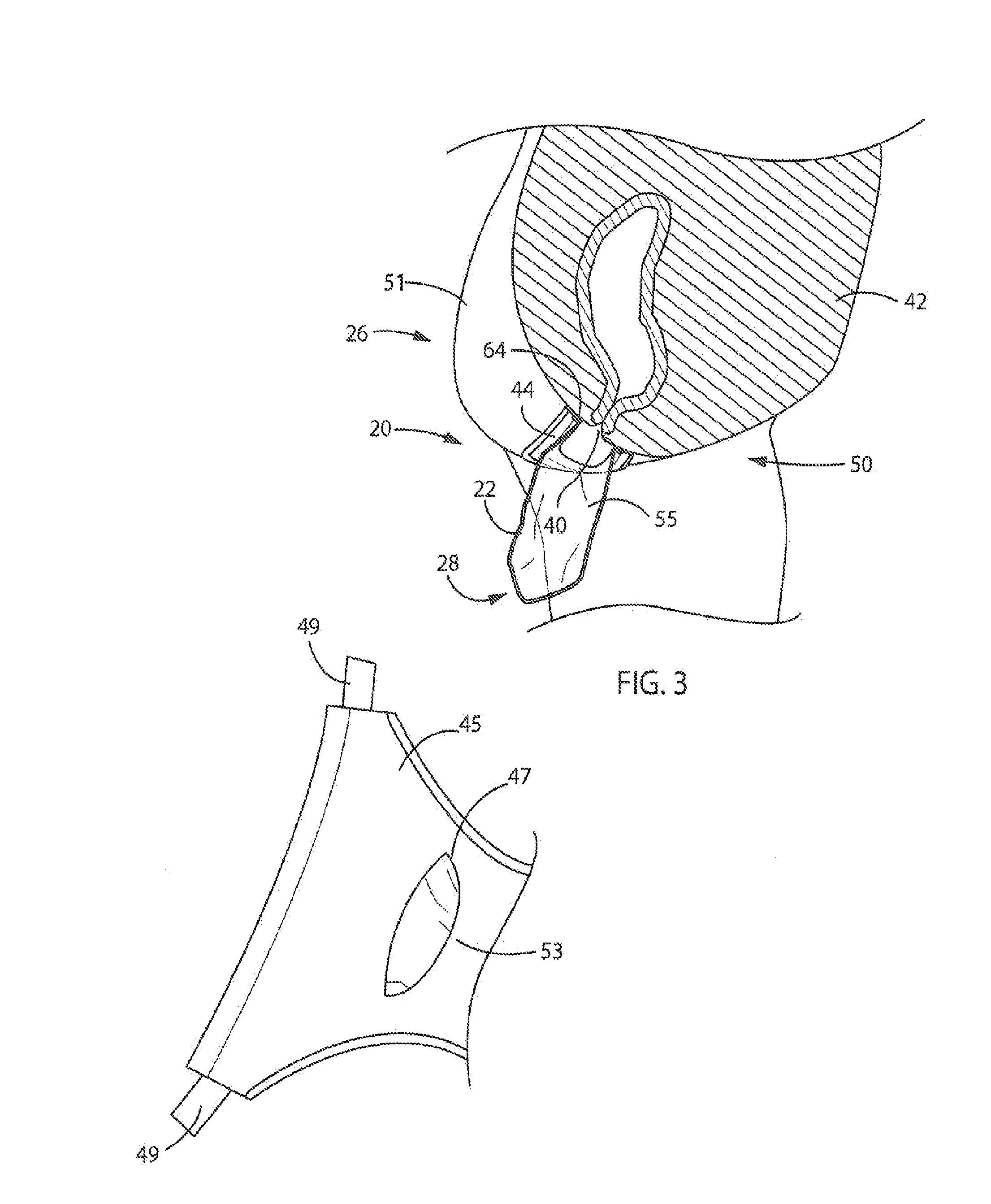With extended life durations, more and more people, even “healthy” adults and / or children, can be subject to intermittent or extended periods of
fecal incontinence or other infirmities which render the ability to use a restroom or even a
bedpan extremely difficult if not impossible.
As is readily understood,
exposure to fecal matter, for any duration, can be detrimental to tissue health such as maceration or ulcers,
patient comfort, and general environment cleanliness and
sanitation.
Commonly, persons suffering from
fecal incontinence have some degree of mobility but may have a degree of mobility that inhibits expedient if any use of restroom facilities if suffering from fecal incontinence.
Due to the availability of such caregivers and / or the desired privacy of users with no appreciable mental infirmities, some users may attempt unassisted use of restroom facilities which could
expose the user to risk of injury or exacerbate an underlying infirmity.
Various fecal matter containment appliances are commonly ill-suited for use with the area of the user
proximate the anal opening.
The contours of the anal cleft and the pressures associated with a prone patient position generally result in other appliances, such as
ostomy appliances or the like, as being ill suited for use with cooperation of the anal cleft.
Further, the lack of any ancillary structure permanently or temporality affixed to the
anatomy of the user renders use of such appliance as being associated with the anus impractical if not ill advised.
The
anatomic location as well as the contour of the anatomy surrounding the anus renders such appliances ill-suited for cooperation with the area
proximate the anus.
Understandably, not all fecal incontinences support the intrusive and excessive alteration of the anatomy of the user associated with ostometric appliances.
Known anal fecal matter collecting appliances, sometimes referred to as fecal bags, suffer from various drawbacks.
Repeated removal and replacement of a fecal bag can, result in injury to the tissue or other complications associated with extended periods of placement of the fecal containment appliance.
Aggressive adhesives or adhesives having a high tack adhesion parameter can damage the tissue during removal of the appliance.
Improper initial placement of the adhesive can result in replacement of the adhesive during each replacement of the appliance which only exacerbates the undesirable affects associated with repeated placement and removal of the adhesive.
Unfortunately, less aggressive adhesives can result in configurations wherein the containment appliance comes loose or mores relative to the anus during use of the same.
Partial engagement of the engagement interface can result in leakage from the appliance and exacerbate the considerations associated with user tissue care as excrement may be held in contact with surrounding tissue for extended durations and / or may soil undergarments and / or
bedding.
Although adhesives having lower tack adhesion parameters mitigate some of the complications associated with protecting the tissue surrounding the anus, lowering the tack adhesion can exacerbate leakage and / or movement of the appliance during use.
Such considerations can be particularly problematic for bedridden users as a majority of the weight of the user is born upon the hip area, and the appliance disposed between the user and the supporting surface, during rolling or shifting activities.
Inadequate cooperation of the appliance with the
perineum can result in
exposure of the urinary anatomy, such as the testes,
penis,
vagina, catheters or the like, to fecal matter.
Exposure of such anatomy or medical appliances results in unsanitary conditions that tend to increase the incidence of bladder and / or urinary tract infections.
Desired placement and maintained engagement of the area of the appliance that faces the forward positioned anatomy lessens the potential of such consequences but the close proximity and overlapping shape of the anatomy associated with the perineal area, particularly for prone users, complicates the ability to maintain a desired cooperation of the appliance with the user.
The overlapping of the opening of the appliance with portions of the container tends to overstress the generally sealed interaction of the appliance with the anal area of the wearer resulting in leakage or displacement of the container relative to the anatomy of the wearer and can result in failure of the appliance to adequately capture the fecal matter in a sanitary manner.
Many such appliances also fail to provide an adequate methodology for providing a sealed configuration of fecal matter containing used appliances.
Leaving an infirm user unattended for extended periods can result in the collection of an excessive volume of fecal matter rendering a closure methodology inoperable.
Such methodologies increase the time and costs associated with servicing and maintaining such appliances.
 Login to View More
Login to View More  Login to View More
Login to View More 


